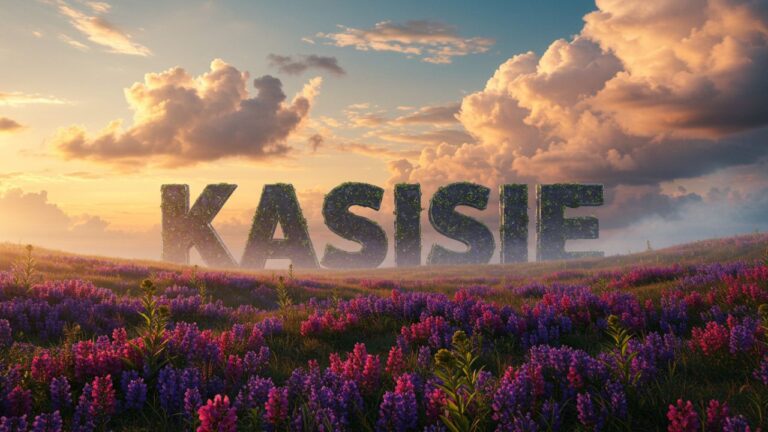
Harmonicode: Exploring the Future of Sound and Code Integration
What is Harmonicode?
At its core, harmonicode is a multidisciplinary concept that combines principles of harmony in music with the structure of programming. This innovative approach allows developers to write code that produces musical output, manipulate sound waves, or create responsive musical environments using algorithms.
For example, with frameworks, coders can generate dynamic audio, build generative compositions, or develop interactive installations where music changes in real time based on user input or data streams.
The Origins and Evolution of Harmonicode
The term “harmonicode” is relatively new but reflects a long-standing relationship between music and math. From the Pythagorean theory of harmony to modern audio programming languages like SuperCollider and Sonic Pi, developers and composers have always found common ground in rhythm, frequency, and code.
With the rise of open-source platforms and real-time programming environments, has transformed from a niche interest into a growing movement. It’s now being used in educational tools, experimental art, game development, and immersive tech like VR.
Why Harmonicode is Gaining Popularity
1. Enhances Creativity Across Disciplines
One of the biggest advantages of is that it bridges the gap between musicians and coders. You don’t have to be a virtuoso or a senior developer to start experimenting. Tools like TidalCycles and Hydra let users create live visuals or soundscapes with just a few lines of code.
2. Useful in Education and STEAM Initiatives
Harmonicode is becoming a popular choice for STEAM (Science, Technology, Engineering, Arts, Mathematics) programs. It teaches programming logic through sound and rhythm, making complex coding concepts more accessible and engaging to students.
3. Opens New Frontiers in Game Audio and Interactivity
From indie games to AAA productions, interactive music powered by allows for more immersive storytelling. Background scores can change based on gameplay events or user behavior, creating richer emotional experiences.
Tools and Languages for Harmonicode Projects
If you’re interested in exploring , here are some widely-used tools and platforms that embody the concept:
-
Sonic Pi – A live coding environment designed for education and performance. It’s one of the most popular ways to dive into harmonicode.
-
SuperCollider – A platform for real-time audio synthesis and algorithmic composition.
-
TidalCycles – Focused on rhythmic patterns and suitable for live musical performances.
-
FoxDot – A Python-based live coding environment for creating music.
-
Hydra – Though visual-based, it often integrates with projects for sound-reactive visuals.
These tools are open source and come with active communities and learning resources—perfect for anyone diving into for the first time.
Real-World Applications of Harmonicode
1. Live Coding Performances
Artists use harmonicode in real-time performances to create music live on stage by writing code. These performances, often part of the “algorave” scene, combine code, rhythm, and visuals for a unique experience.
2. Music Therapy and Neurofeedback
Because of its programmable nature, can be used to generate personalized music in therapeutic settings. It can respond to biofeedback like heartbeat or brainwave activity, offering new tools for relaxation and mental health support.
3. Data Sonification and Audio Visualization
Harmonicode is also being applied in data science for sonification—translating complex data into sound. This approach allows analysts and researchers to hear trends in data, making it easier to detect anomalies or patterns.
Challenges and Limitations of Harmonicode
While promising, is not without its hurdles:
-
Steep Learning Curve: Some tools require knowledge of both programming and music theory.
-
Performance Complexity: Live coding performances depend heavily on stable hardware and software.
-
Limited Mainstream Use: Though growing, still exists largely in experimental and educational spheres.
Nonetheless, the field is advancing quickly, and each year brings more user-friendly tools and wider adoption.
The Future of Harmonicode in Tech and Art
sits at a fascinating intersection—where software meets sound, and logic meets emotion. As more developers, educators, and artists recognize its potential, we can expect a surge in interactive art, generative music, and intelligent sound systems.
Future advancements might include:
-
AI-assisted environments
-
Integrated VR/AR musical coding experiences
-
Haptic feedback devices programmed through logic
-
Wider implementation in therapy, education, and even architecture
Whether in the classroom, the concert hall, or the developer’s terminal, is proving itself as a transformative tool.
Getting Started with Harmonicode
If you’re inspired to begin your own journey:
-
Download Sonic Pi or TidalCycles – These are beginner-friendly platforms.
-
Watch Tutorials – YouTube and GitHub have extensive free resources.
-
Join Online Communities – Platforms like Reddit, GitHub, and Discord feature groups dedicated to and live coding.
-
Experiment Without Pressure – Start by copying and modifying existing examples. As you become comfortable, build your own compositions.
Remember, is as much about play as it is about precision.
Conclusion: Why Harmonicode Matters Now More Than Ever
In a world where digital experiences dominate, empowers individuals to create with code in deeply expressive ways. It goes beyond simple music generation—it invites collaboration between disciplines and fuels innovation in music, education, gaming, and mental wellness.
Whether you’re looking to perform live, teach students, or experiment with sound as data, offers a fresh, forward-looking approach to creation.







